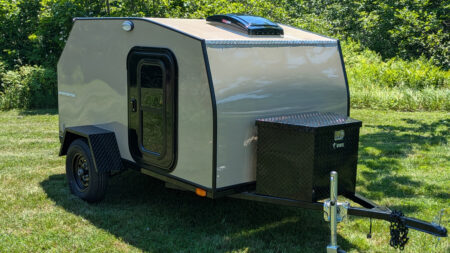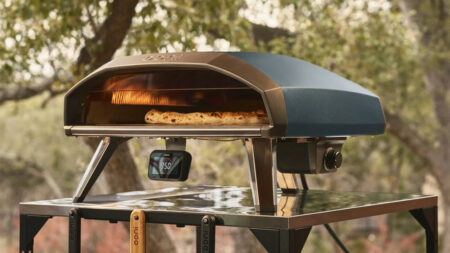Having outdoor furniture in your garden or patio not only expands your seating and lounging zone but is perfect for enjoying the outside world. There is a certain joy in spending quality time outside when possible and one gets to enjoy the fresh air and sun. But this also means that your outdoor furniture needs special maintenance rituals as it is more prone to wear, tear, and damage, especially during winter.
As the temperatures dip and the chill of winter sets in, many of us start thinking about how to properly care for our outdoor furniture. While outdoor seating or tables are made to endure a variety of conditions, winter’s freezing temperatures, snow, and ice can cause significant damage over time. Taking care of your furniture in the off-season not only ensures its longevity but also saves your time and money when the warmer months return on getting it fixed.
To save you the trouble of scouring the web for practical steps to care for outdoor furniture, we have compiled a detailed guide on how to maintain your outdoor furniture along with material-specific tips to keep your items in top shape throughout the winter so you get to enjoy worry-free time in your outdoor space come spring. But first, let’s talk about the different types of outdoor furniture.
Different Types of Outdoor Furniture
Before diving into how to care for your outdoor furniture, it’s helpful to know what type of materials you’re dealing with. Whether you’re a fan of classic wooden pieces, sleek metal designs, or durable synthetic materials, each one has its unique needs. Below are some of the most popular outdoor furniture types:
Wooden Furniture
Wooden outdoor furniture offers a rustic, natural appeal, making it a favorite for patios and gardens. However, it requires more attention in the colder months to prevent cracking and rotting.
Metal Furniture
Metal furniture, whether aluminum, steel, or wrought iron, is sturdy and long-lasting, but it is prone to rust if not properly cared for or looked after, especially when exposed to moisture during winter.
Wicker and Rattan Furniture
Wicker and rattan, often made from natural or synthetic fibers, are popular for their stylish, lightweight, and cozy feel. These materials need special care to maintain their shape and prevent wear during colder weather.
Plastic or Resin Furniture
Plastic and resin furniture is low maintenance and highly weather-resistant, but these materials can still degrade or fade over time with prolonged exposure to the elements.
Also Read: Polywood Outdoor Furniture – Pros, Cons, and Price
Winter Maintenance for Outdoor Furniture
No matter what material your outdoor furniture is made from, taking a few simple steps to clean and store it properly will help preserve its beauty and functionality. Here’s a guide to get you started:
General Cleaning and Maintenance Tips for Outdoor Furniture
- Before you think about storage, always start with a thorough cleaning. Use mild soap and warm water to wipe down tables, chairs, and cushions
- Be sure to remove dirt, grime, and any debris that may have accumulated during the fall. You can use a soft brush or cloth to scrub delicate areas
- Moisture is one of the biggest threats to outdoor furniture during winter. After cleaning, allow your furniture to dry completely. This helps prevent mold, mildew, and rust from forming over the winter months. Avoid leaving wet cushions or furniture exposed to cold weather
- If you can’t bring your furniture inside for the winter, consider using waterproof covers designed specifically for outdoor furniture. This protects it from rain, snow, and other weather conditions. Be sure to cover every piece securely, leaving no gaps for moisture to seep in
- Cushions and pillows are more vulnerable to weather damage. If possible, store them indoors or in a shed to prevent them from becoming waterlogged or growing mold. If you must leave them outside, invest in moisture-resistant storage bags
How to Maintain Different Types of Outdoor Furniture
Wooden Furniture
Wooden furniture is beautiful but can be delicate, especially during the winter months. If left unprotected, moisture can cause wood to warp, crack, or develop mold. Follow these tips for winterizing wooden furniture:
- Clean your wooden furniture with a gentle cleanser and then apply a protective coat of sealant or wood oil. This helps protect it from the elements and keeps it looking fresh
- If you can, store your wooden furniture indoors. Otherwise, cover it with a waterproof furniture cover, especially to protect against snow and rain
- Wooden furniture is more prone to rot in damp conditions. Avoid storing it near downspouts, gutters, or areas where water tends to accumulate
Also Read: 10 Ways to Remove Rust Stains From Metal Outdoor Furniture
Metal Furniture
Whether your metal furniture is made of wrought iron, aluminum, or steel, the biggest concern in winter is rust. Here’s how to keep your metal furniture in great condition:
- Wipe down your metal furniture to remove dust, dirt, and any potential corrosive substances like salt from roads or walkways
- Apply a layer of rust-resistant spray or wax. This is very important for wrought iron furniture, which is particularly vulnerable to rust
- If possible, store your metal furniture in a dry place to prevent it from being exposed to excessive moisture. Alternatively, use a heavy-duty waterproof cover
Wicker and Rattan Furniture
Wicker and rattan pieces are charming but require care, especially in winter, when they can become brittle or fade. Here’s how to keep them in top condition:
- Gently clean wicker or rattan with a soft brush to remove debris. If your furniture is made of natural rattan, consider applying a furniture oil to keep it from drying out and cracking
- Avoid letting your wicker or rattan furniture stay wet for long periods, as it can cause damage. Always ensure it’s thoroughly dried before storing or covering it
- Wicker and rattan furniture are less durable than other materials in extreme cold, so if possible, store it in a dry, sheltered place, like a garage or shed
Plastic or Resin Furniture
Plastic or resin furniture is relatively low-maintenance, but it’s not immune to winter wear. Follow these tips to prolong its lifespan:
- Clean your plastic furniture thoroughly to remove dirt, grime, or any mold that may have formed. Check for cracks or signs of damage
- While plastic and resin furniture are more weather-resistant than other materials, it’s still a good idea to cover them or store them in a sheltered area during winter to avoid prolonged exposure to cold temperatures
- Extreme temperatures can cause plastic furniture to become brittle, so try to store your furniture in a moderately cool place if possible
Also Read: A Detailed Guide on How to Clean Your Fireplace
What if You Leave Outdoor Furniture Outside in Winter
While it’s always best to store your outdoor furniture indoors or under protective covers, we know that’s not always possible. If you leave your furniture outside in the winter, here’s what can happen:
- Wooden furniture may warp, crack, or rot due to moisture and freezing temperatures. It may also become discolored from exposure to snow, rain, or ice
- Metal furniture is prone to rust, particularly wrought iron, which can deteriorate quickly if exposed to moisture. Even aluminum, though rust-resistant, can still suffer from corrosion over time
- Wicker and rattan can become brittle and fragile after prolonged exposure to cold and moisture. The fibers can also become damaged, resulting in a loss of shape and integrity
- Plastic or resin furniture can crack or become discolored if left out in freezing temperatures for too long. They are also prone to fading due to prolonged exposure to the sun’s rays
If you must leave your outdoor furniture outside during the winter, always make sure it’s properly covered and elevated off the ground to prevent water from seeping in.
Conclusion
Caring for your outdoor furniture during the winter months is essential to maintain its longevity and preserve its appearance. With the right preparation and maintenance, you can protect your investment and ensure your furniture is ready for use when the weather warms up again.
By following the abovementioned tips, including specific care instructions for different materials, you’ll be able to enjoy your outdoor living spaces year after year, no matter the season.
FAQs on How to Take Care of Outdoor Furniture in Winter
Q. How often should I clean my outdoor furniture during winter?
A. It’s a good idea to clean your furniture at least once every few weeks in months approaching winter to remove dirt, snow, or moisture that can cause damage over time. This will help prevent any buildup that could negatively affect the furniture’s durability. Before the freezing temperature arrives, store your cleaned furniture in a dry place to prevent damage.
Q. How can I protect my wooden furniture from the cold?
A. Clean your wooden furniture thoroughly, then apply a protective coat of sealant or wood oil. Store it indoors if possible, or cover it securely with waterproof covers.
Q. Do I need to worry about rusting on metal furniture?
A. Yes, rust is a major concern for metal furniture in winter. To protect it, clean it thoroughly and apply a rust-resistant spray. Store it indoors if possible, or use a durable cover to shield it from moisture.
Q. How do I care for wicker and rattan furniture in winter?
A. Clean wicker and rattan furniture gently and apply furniture oil to keep it from drying out. Store it in a dry place, if possible, and cover it well to prevent damage from snow and rain.
Q. Is plastic furniture safe to leave outside in winter?
A. Plastic furniture is generally more weather-resistant, but it can still crack or fade over time due to extreme cold. If possible, store it in a sheltered spot, or use a cover to protect it from the elements.
Q. What type of cover should I use for my outdoor furniture?
A. Look for covers that are waterproof, UV-resistant, and breathable. This will help keep your furniture dry while preventing mold and mildew growth. Choose covers that fit snugly to provide the best protection.
Q. Can I store my cushions and pillows in a shed or garage during winter?
A. Yes, storing cushions and pillows indoors in a dry, cool area such as a shed, garage, or basement is ideal. Be sure to use moisture-resistant bags to protect them from dampness and pests.
Q. How do I clean snow and ice off my outdoor furniture?
A. Use a soft broom or brush to gently remove snow and ice from your furniture. Avoid using sharp tools or metal scrapers that could damage the surface. For ice, you can also use warm water to help melt it but dry the furniture immediately after.
Q. Should I apply furniture polish to my outdoor furniture?
A. It depends on the material. For wooden furniture, applying furniture polish or wax can help protect the surface and give it a nice sheen. For metal furniture, it’s better to use a rust-resistant spray rather than polish. Avoid using furniture polish on wicker or rattan, as it could make the surface slippery.
We hope this guide on the maintenance of outdoor furniture has helped with your queries and understanding how important it is to keep it protected during the cold months. Now wait for the weather to get warm and enjoy your outdoor space, again.
Follow Homecrux on Google News!




